Preview Brooklyn Historical Society DUMBO
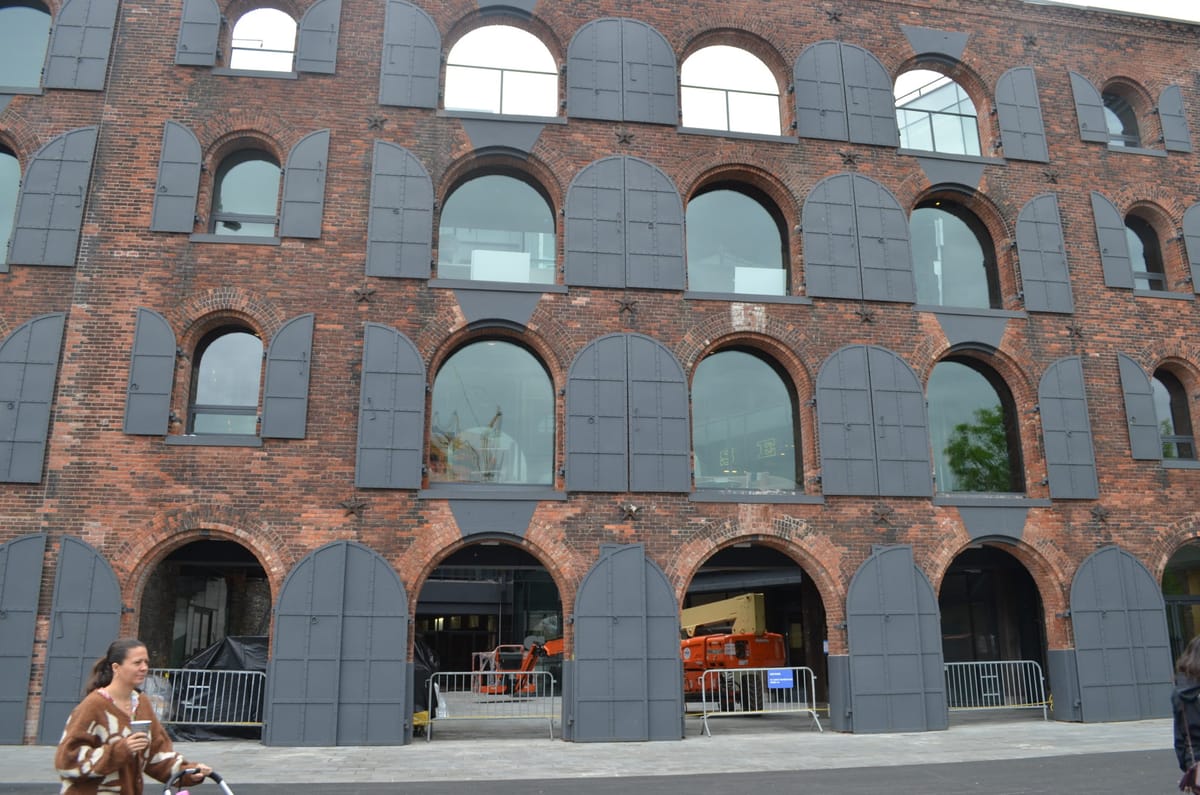

On Friday, May 19, the Brooklyn Historical Society will debut its second museum at 55 Water Street, located on the second floor of the Empire Stores complex in DUMBO.
Founded in 1863, Brooklyn Historical Society (BHS) is a renowned urban history center dedicated to preserving and promoting the study of Brooklyn’s 400-year history.
“Our space is absolutely gorgeous on Pierrepont Street, but it’s always been a fairly small space for the kind of work we do,” BHS President Deborah Schwartz explained to BKLYNER Tuesday afternoon as crews worked busily putting on the final touches in the DUMBO venue. “At the core is a great research library, and we have small spaces we use for exhibitions, and a beautiful space for public programs, but we’ve always been constrained somewhat.”
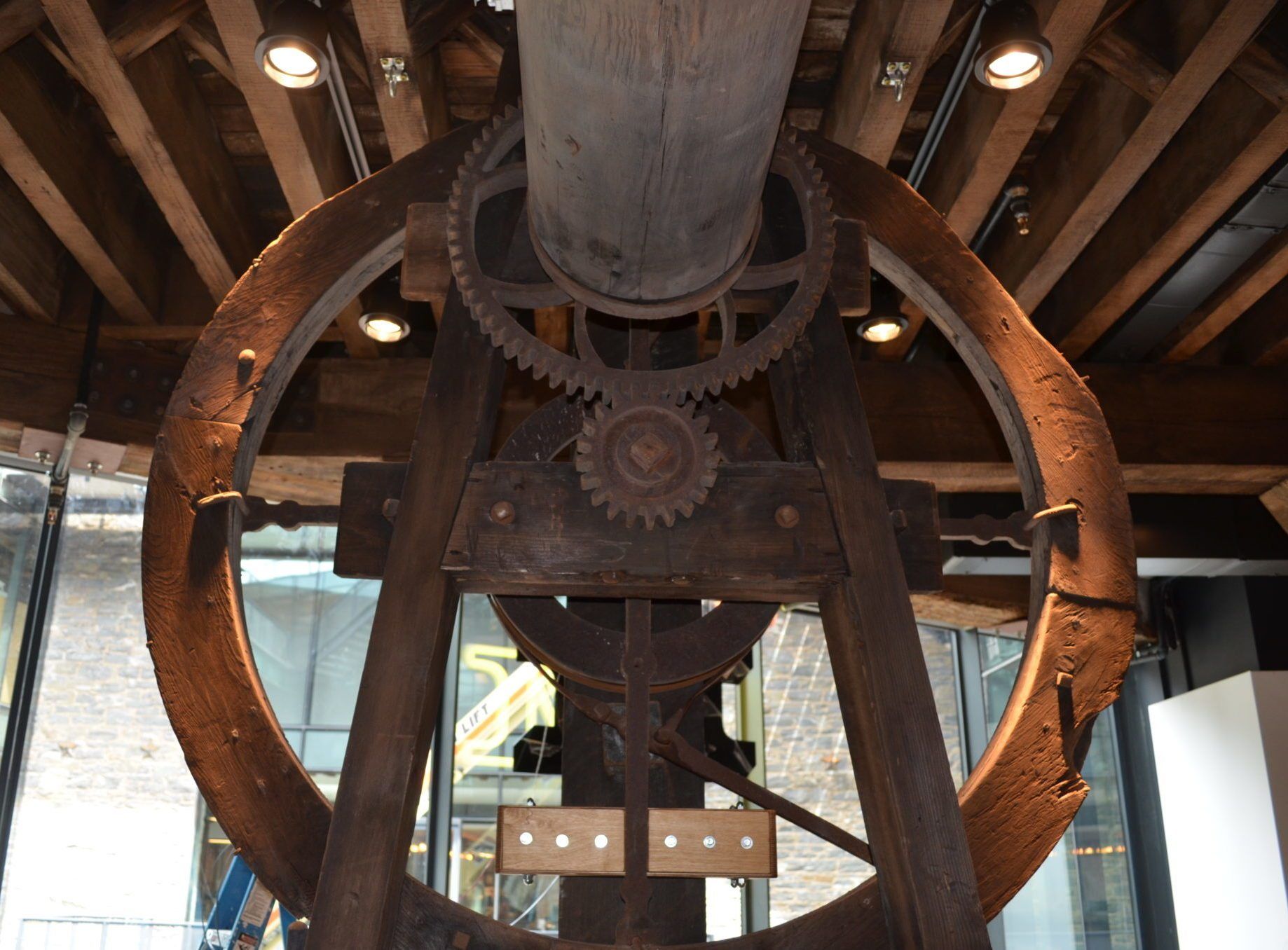
When asked why BHS decided to open its second museum in DUMBO, Schwartz replies, “It is an extraordinary opportunity for us to be able to bring to life the history of this building, the history of the area. We knew right away that this would be a perfect match for the mission of the historical society.”
With limited space in the Brooklyn Heights facility, BHS found it often had to collaborate with other cultural institutions, such as the Brooklyn Navy Yard, Green-Wood Cemetery, and the Weeksville Heritage Center to present its programming.
“For us to have a space that is really ours, to do the kinds of interesting exhibitions that we want to do, is terrific,” Schwartz states.
Four years in the making, Brooklyn Historical Society DUMBO’s new home in a renovated 19th century warehouse boasts floor-to-ceiling windows with picturesque views of Lower Manhattan, the Manhattan Bridge, the East River, and Brooklyn Bridge Park. The DUMBO venue offers the historical society the “ability to tell the history of this area, how much it’s changed over time, and the fact that it was such a vibrant and important industrial area,” Schwartz says.
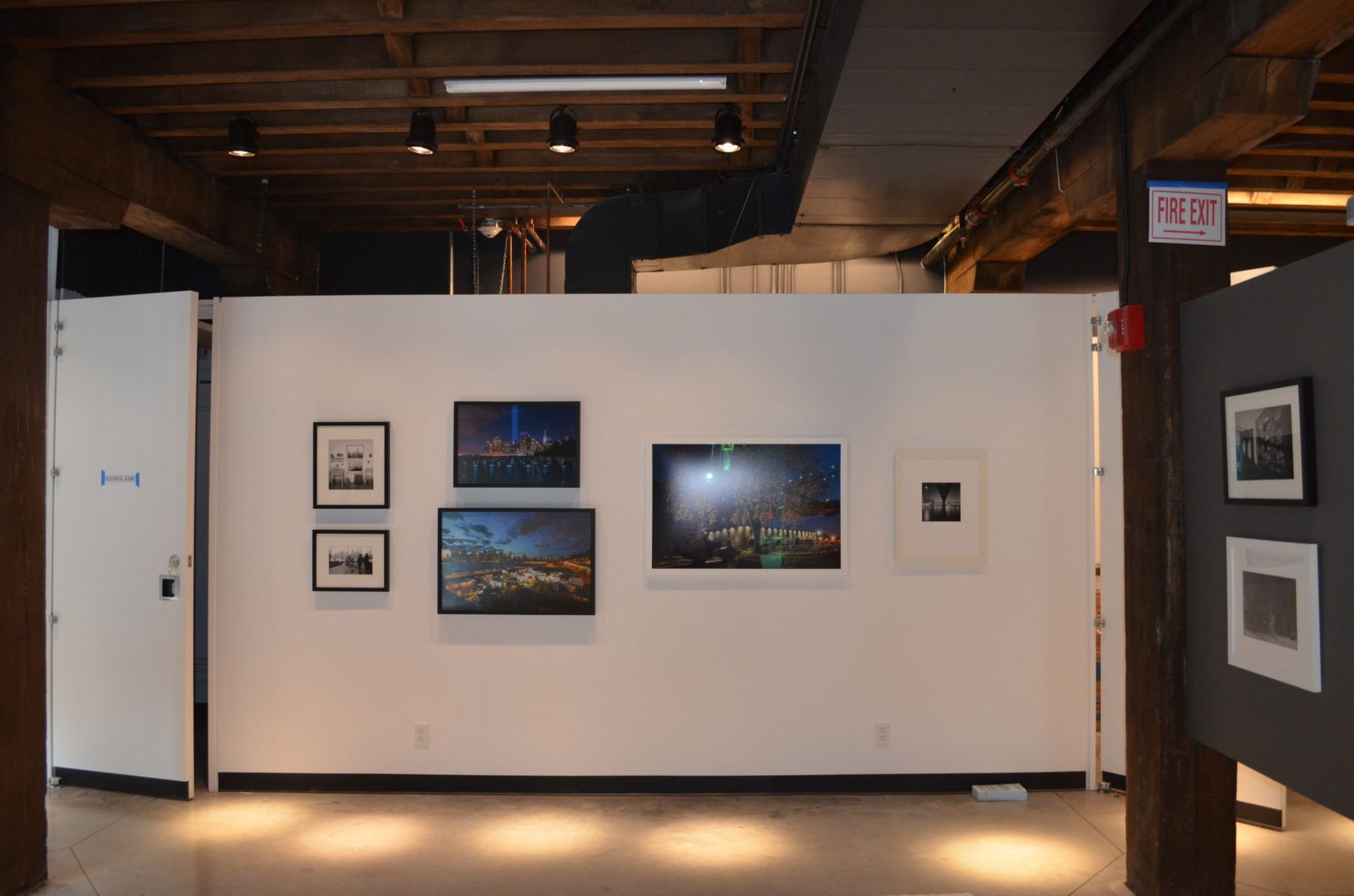
BHS DUMBO’s inaugural exhibition, Shifting Perspectives: Photographs of Brooklyn’s Waterfront, features the work of two dozen photographers, including Berenice Abbott, Rudy Burckhardt, Bruce Davidson, and Chester Higgins. The exhibit will be on view until September 10.
“The programming here will always be about the waterfront. We will always make that the focus,” Schwartz says. “This opening exhibition is photographs, some historical, some contemporary, but all exploring the Brooklyn waterfront, which of course is a vast area from Newtown Creek to Coney Island.”
“The waterfront for New Yorkers and visitors to New York is a relatively new identity to relate to,” Marcia Ely, Brooklyn Historical Society’s Vice President of Programs & External Affairs, insists. “People who have been in New York for decades know that you never really saw the water. You were on the FDR Drive or the Westside Highway. You were driving, you weren’t on the water.”
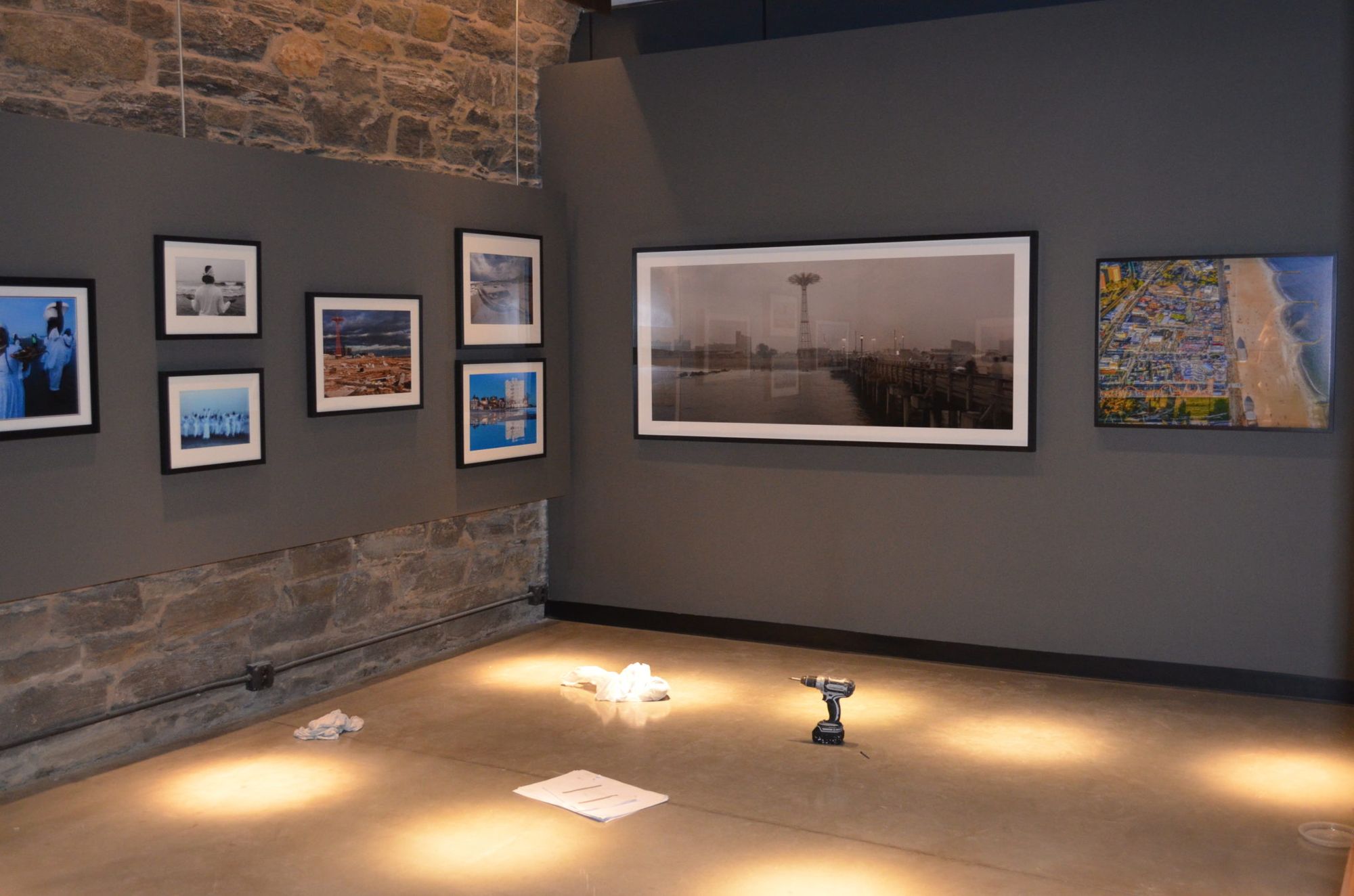
Ely says only recently has the waterfront become the “new ‘it’ thing,” thanks primarily to Brooklyn Bridge Park’s revitalization of the shoreline. She adds that the museum’s inaugural exhibit reflects this—”It’s all about images of the Brooklyn waterfront.”
“You really get a sense of what the place looked like in the 1930s from Berenice Abbott’s photographs,” Schwartz adds. “You can see the period of de-industrialization captured by Stanley Greenberg. You can see images by contemporary artists looking at the space with fresh eyes. It really gives you a sense of how changes in the waterfront have been so dramatic.”
“And some of these images, like the Brooklyn Bridge, you might see uptown,” Ely notes, “but it’s very different to see these images [here] and then go outside and see the Brooklyn Bridge.”
In December 2017, BHS DUMBO will host a major, long-term exhibition, Waterfront. The exhibit will tell the stories of workers, artists, activists, innovators, families, neighborhoods, industries, and ecosystems, illustrating the global and local history of Brooklyn’s waterfront. The exhibit will feature “interactive components, media components, and lots of fun things for kids to do,” according to Schwartz.
Built between 1869 to 1885, the Empire Stores warehouse held goods from around the world, and later stored unroasted beans for nearby Arbuckle Bros. Coffee, but had stood vacant and in a state of disrepair since the mid-20th century. In 2013, Brooklyn Bridge Park and Midtown Equities announced plans for an adaptive reuse of the structure, which included BHS’s new satellite museum.
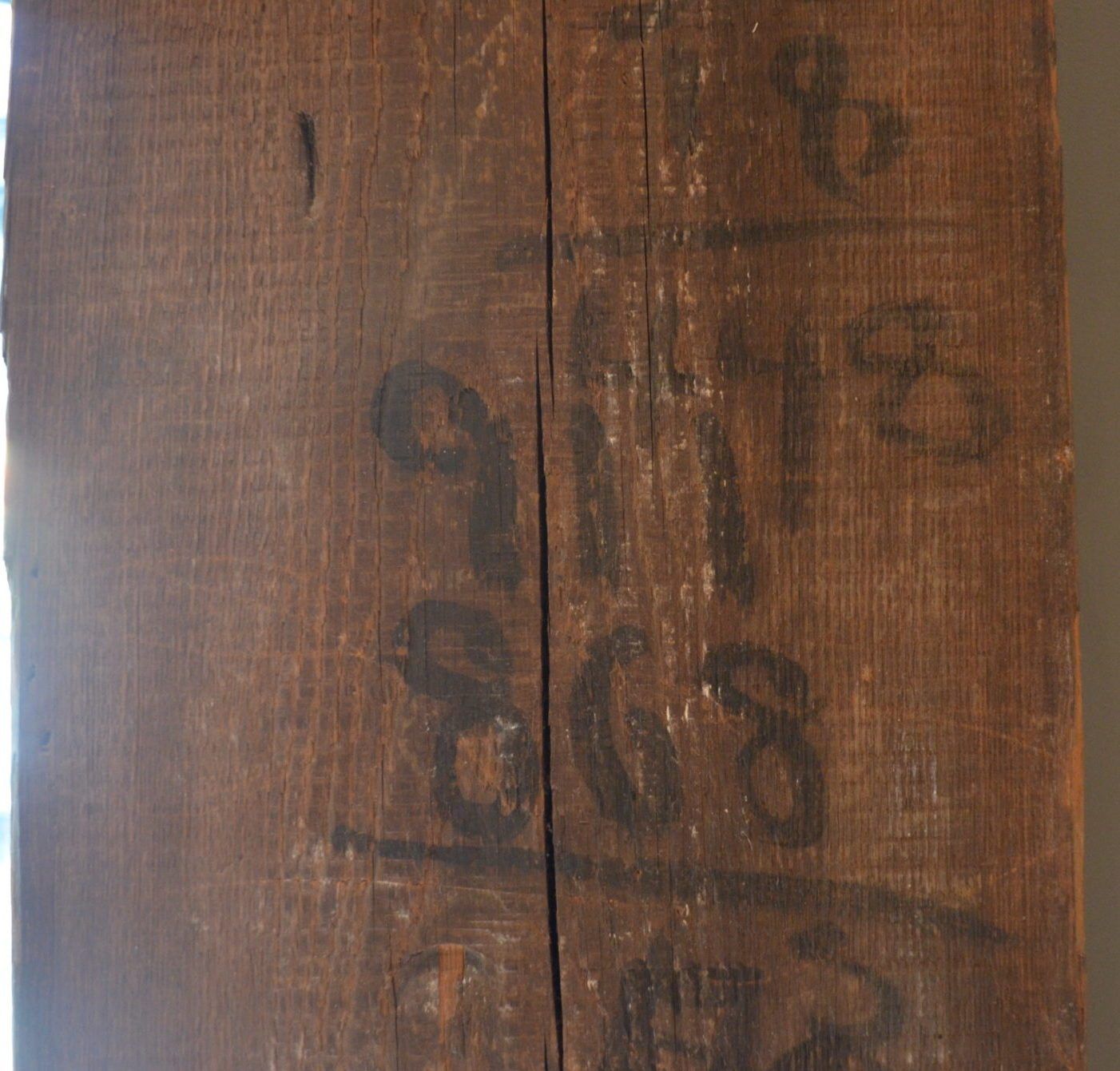
In restoring the building, the developer, Midtown Equities preserved “most of the bones” of the structure, Schwartz says, including original wooden beams found in the ceilings and in columns, as well as the original schist walls. She says if you look closely at some of the beams, you can see the old markings and scribbles made by workmen to keep track of the number of boxes or containers that were shipping in and out of the warehouse.
The space also features an enormous, antique winch that was brought in from another part of the formerly abandoned building where it had sat for decades. “We had it conserved and we had it moved into this space,” Schwartz explains.
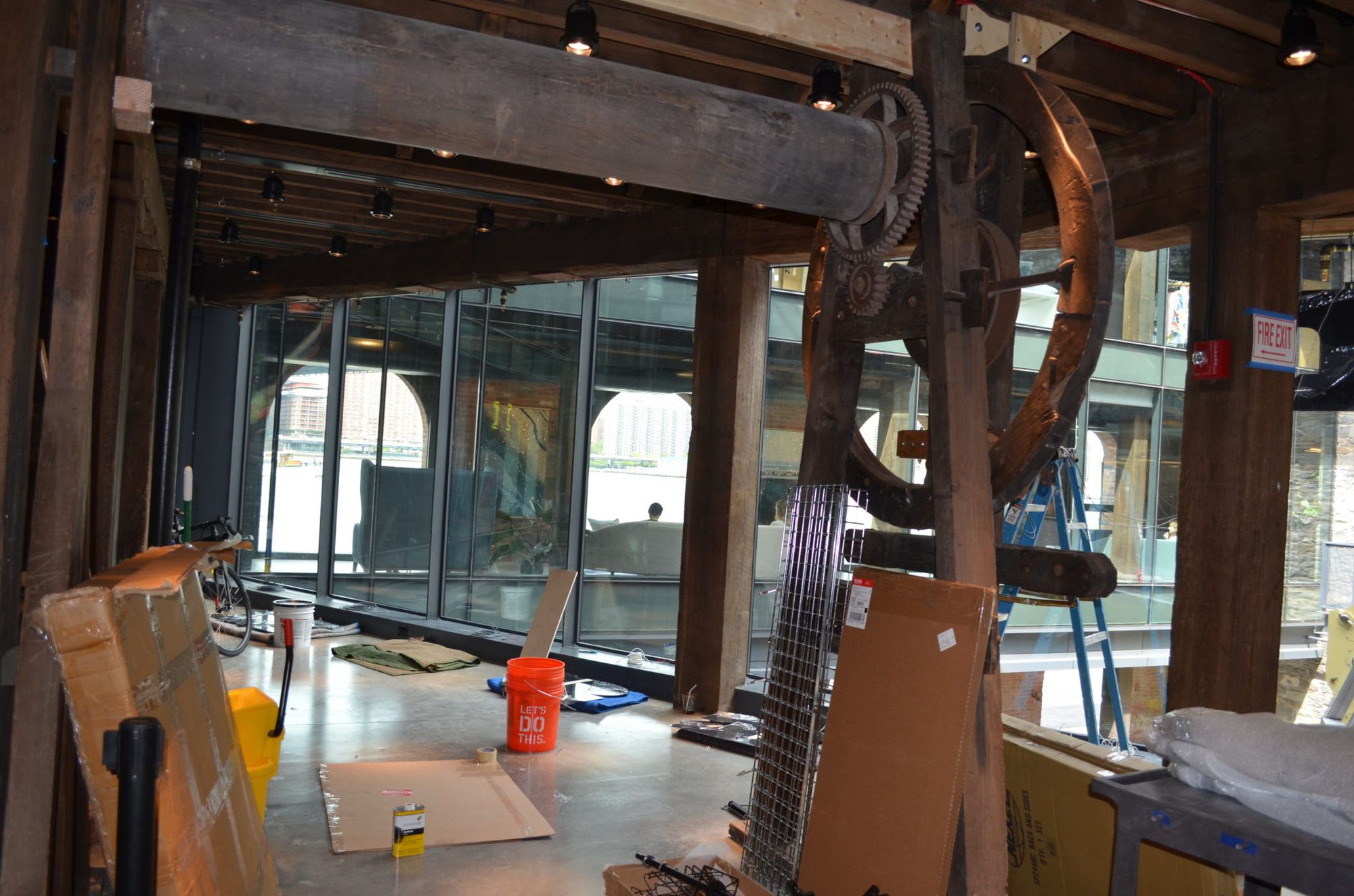
“It would have been used to haul goods and products up from the waterfront through these windows or through shafts in the building, motored by mules pulling the winch with ropes,” she continues. “For people to be able to see it and understand how the building actually functioned is just one of the great treats. We’re very delighted to be able to tell stories like that,” she says enthusiastically.
“We tried wherever we could” to preserve unique, historic details, Schwartz insists.
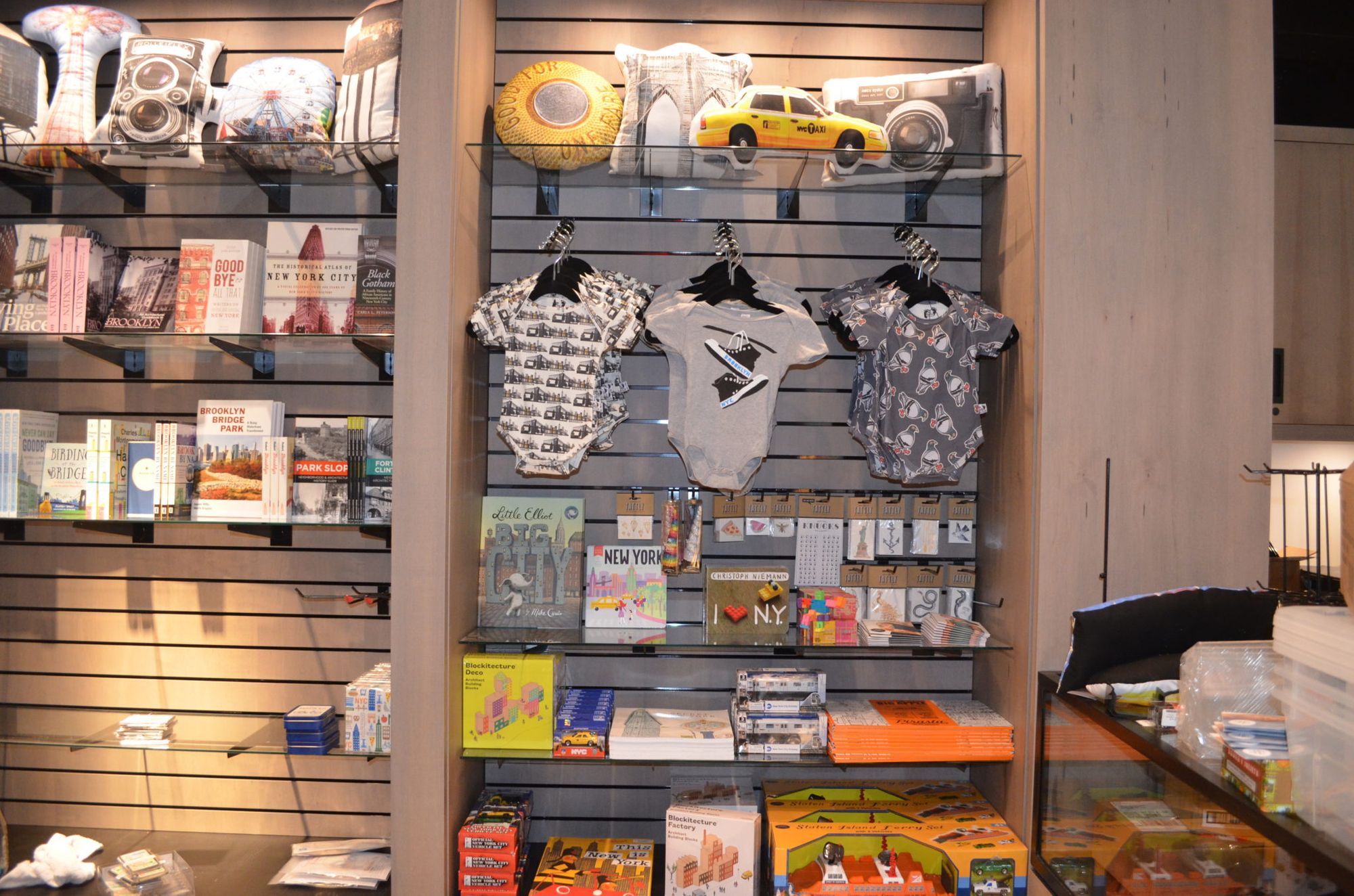
During BKLYNER’s visit, the small gift shop was being stocked with eye-catching Brooklyn-based merchandise. “We are carrying some of the same products [as Brooklyn Heights] but also some very different items that are targeted for this neighborhood,” Schwartz points out. BHS “values carrying work by Brooklyn artists and artisans,” she notes, so expect to find lots of cool locally-made merchandise at the gift shops.
Illuminated letters spelling out “MUSEUM” along with flashing arrows pointing the way to BHS DUMBO’s entrance were in the process of being installed Tuesday afternoon. The bold signage will attract the attention of Brooklyn Bridge Park visitors and direct museum-goers who took the short 15-minute walk over from the BHS Brooklyn Heights location.
Brooklyn Historical Society DUMBO’s opening weekend, May 19 – 21, will be free for visitors. After that, the suggested $10 donation will admit visitors to both the DUMBO and Brooklyn Heights locations.




